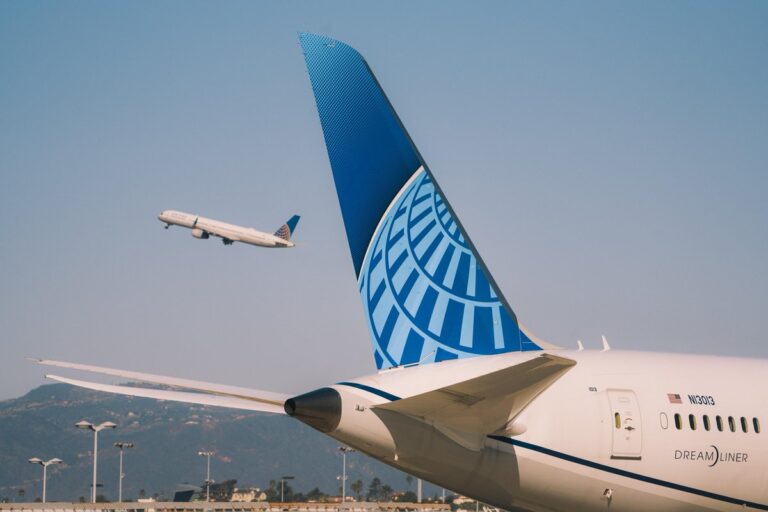
When to Book: The Real Scoop on Cheap Flights
Is Tuesday Still the Best Day to Book?

I’ve heard so many debates about picking the perfect day to lock in cheaper airfare, and Tuesday often gets the spotlight. Years ago, I recall reading that airlines would release their biggest discounts after the weekend, leading to slight price drops by midweek. Today, however, I see a much more fluid market. According to a 2025 travel analysis by the Airlines Reporting Corporation, fare fluctuations can occur from Sunday through Saturday, without a single standout day for universal deals.
Still, there can be minor patterns that favor midweek bookings. I’ve watched fares drop on a Tuesday or Wednesday, then spike again toward the weekend when casual travelers jump online. Yet those dips aren’t always guaranteed. My advice is to keep a flexible approach and sign up for multiple fare alerts so you don’t miss sudden drops. Rather than clinging to any old rule, I recommend verifying pricing trends over a few days for a more reliable snapshot.
In my own observations, I’ve seen fares dip for short windows, then rebound quickly if demand surges. This real-time, dynamic pricing means you’ll need to stay vigilant and leverage tools like price trackers, email alerts, or even specialized apps that notify you the moment a good deal appears. Staying informed and ready to purchase at the right moment can make Tuesday—or any other day—work in your favor.
Why Sunday Might Be Your New Friend

Industry chatter has recently shifted to Sunday as a surprisingly good day to snag impressive discounts. I’ve personally noticed official airline sites occasionally offering flash sales on Sundays, likely intended to draw in weekend browsers. According to a recent study by Expedia, some domestic flights can be up to 6% cheaper on Sundays, and international fares sometimes see a 17% drop compared with other days.
Of course, these numbers don’t hold up across every route or season. When I sample flight searches on Sundays, I typically get lower fares for off-peak travel periods or lesser-known destinations. Premium cabins, in particular, can offer better Sunday deals—some marketers aim to fill high-end seats during slower booking windows, offering discounts to entice well-informed travelers.
My best Sunday strategy involves checking airline websites early in the day and keeping an eye on social media updates from carriers. Many airlines announce short-term promotions during weekends, and if you book right when the promotion goes live, you might get lower fares before others hop on the deal. Patience and timing can make Sunday an underrated gold mine for frequent flyers.
Booking Windows That Matter

I’ve discovered that locking in fares during certain windows can often make or break your travel budget. For domestic trips, many seasoned travelers aim for a sweet spot about 21 to 52 days in advance. In my own practice, checking around the one-month mark has yielded consistent results, though I know others who swear by booking two to three months out.
For international travel, the window gets larger. A recent industry survey suggests booking anywhere from 3 to 5 months ahead to catch early-bird fares. If you’re planning peak-season trips—like a European summer getaway or a major holiday—consider an even longer lead time. I once observed flight prices to Asia spike dramatically about three months before departure, so grabbing tickets earlier can help you secure not only a cheaper fare but also a better seat selection on long-haul routes.
There is a balance, though: jumping on tickets a year out might mean you miss promotional windows or route adjustments. I find that being aware of major travel periods is key—book spring break and Thanksgiving flights as soon as you notice prices creeping up. Watch trends through a reliable data source like Google Flights, and don’t be afraid to commit once the fare dips into what you feel is a fair range.
Additional Tips to Catch Lower Fares

Although picking a day to book is important, I’ve found true savings in overall flexibility. Whenever I can shift my travel dates by a day or two, I frequently spot double-digit percentage differences in flight costs. Flying midweek usually means fewer crowds, and early-morning departures often come at a lower fare, mainly because they’re less convenient for many travelers.
I also suggest widening your airport options. If you live near multiple hubs, compare fares across different departure points. For instance, I once discovered a $150 difference in price between two major airports just 40 miles apart, making it worth the slightly longer drive. Metasearch engines like Kayak or Skyscanner let you quickly check if a nearby airport offers significant savings.
Additionally, consider booking flights and hotels together or bundling in a rental car. Many travel sites offer package deals, which can trim costs even further. And don’t overlook credit card perks—some reward programs allow you to rebook if the price goes down, ensuring your initial purchase doesn’t backfire if fares drop later.
The Bottom Line

In truth, there isn’t a single “best day” to book that will always guarantee the cheapest ticket. I’ve seen Sunday work wonders, but Tuesday might just as easily turn up a deal if the airline happens to adjust prices right then. Flexibility, well-timed booking windows, and the savvy use of price-alert tools all carry more weight than any one specific day.
By actively studying flight data and signing up for timely notifications, you can approximate the best period to purchase. I focus on building a strategy rather than chasing outdated myths: set a price threshold, watch the market for a while, and pounce when the fare hits your sweet spot. This way, you remain in the driver’s seat, maximizing your chances of nabbing comfortable and cost-effective flights.
Final Thoughts

Booking a flight in 2025 demands a watchful eye and a willingness to adapt. I recommend starting your airfare search months in advance for bigger trips and staying open about exactly when and where you’ll travel. If a new route opens up or a sudden promotion appears, being flexible gives you the best shot at saving real money.
At the end of the day, a proactive approach to flight hunting can outsmart the shifting airline algorithms. Monitor prices, stay alert to industry data, and, whenever possible, try scheduling trips outside of high-demand days and times. Small tweaks really can add up to big savings.
Sky Skylar’s Take
Every day in the cosmos of travel comes with its own twist, and I believe there’s always a gem of a fare hiding somewhere. My curiosity about flight pricing got me digging deep, and I’ve seen that the best deals surface when we least expect them. Finding cheap flights isn’t about a single day; it’s about exploring options and daring to be flexible.
I’m convinced that if you stay in tune with travel trends, you’ll beat the system more often than not. That little extra effort—like comparing two airports or adjusting your departure date by a day—pays off in a big way over time.
Follow us back to BoardingArea, we have everything you need to stay informed about the latest travel trends.






























